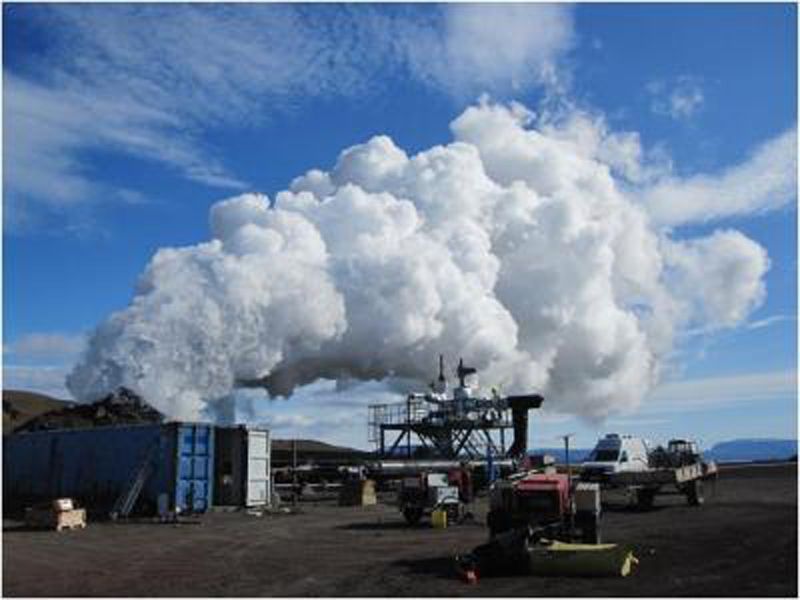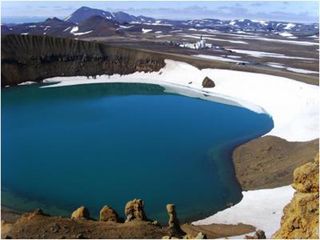Fresh Magma Could Help Power Geothermal Plants

While drilling for sources of geothermal energy in northeastern Iceland in 2009, geologists unexpectedly hit fresh magma and went on to create the first-ever magma-enhanced geothermal energy system.
Geothermal power plants generally gather heat from fissures in the Earth's solid crust, not directly from the molten rock below that produces that heat. The plants pour water through the fissures to create steam that turns turbines that generate energy.
Geologists and industry representatives with the Icelandic Deep Drilling Project (IDDP) set out to drill an exploratory well about 2.5 to 3 miles (4 to 5 kilometers) deep within Iceland's Krafla caldera in search of heat-yielding fissures, but stopped short when they hit fresh magma only 1.3 miles (2.1 km) down. Drilling into molten rock is rare, since only a small portion of the crust contains plumes of magma close enough to the surface to reach with a drill, and only one other case of hitting magma in a borehole has ever been recorded — in Hawaii, in 2007. [50 Amazing Volcano Facts]

To take advantage of this unique opportunity, the geologists created a steel casing that they cemented into the borehole, and poured water into it to produce superhot steam. The steam ultimately reached temperatures greater than 840 degrees Fahrenheit (450 degrees Celsius) and was very high-pressured, capable of producing nearly seven times as much energy as a typical geothermal well, said study co-author Wilfred Elders, a professor emeritus of geology at the University of California, Riverside.
The team spent about two years conducting a series of experiments to test whether a geothermal power plant would be able to handle the acidity — caused by corrosive volcanic gases such as hydrogen sulfide — and the high pressure of the steam. They successfully devised systems to overcome these obstacles but never actually connected the well to the nearby Krafla Power Plant to generate energy, Elders told LiveScience.
The team had to shut down the borehole after two years due to equipment failure at the surface but hopes to either return to the site or to drill a new hole at another site to further explore magma enhancement as an option for more robust geothermal energy production.
"People haven't gone out of their way to explore for molten rock as an energy source, although there has been interest in the concept in the U.S. for about two decades," Elders said. "I think it would be good to revive that interest."
Sign up for the Live Science daily newsletter now
Get the world’s most fascinating discoveries delivered straight to your inbox.
A report detailing the experiments conducted at the well appears in the January issue of the journal Geothermics.
Follow Laura Poppick on Twitter. Follow us @livescience, Facebook & Google+. Original article on LiveScience.











